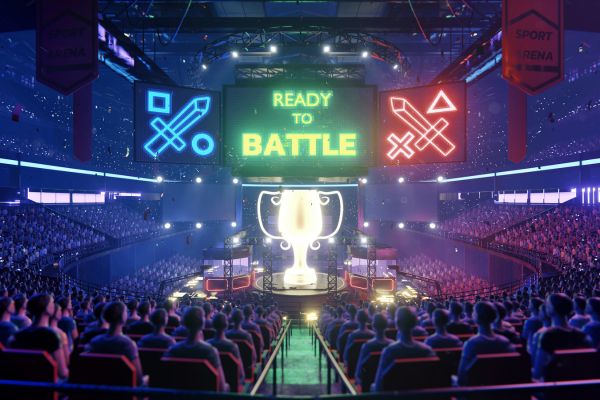In an age where digital landscapes are redefining how we entertain, compete, and connect, one phenomenon has captured the imagination of millions worldwide—esports gaming. From packed stadiums with roaring fans to intense live streams watched by millions, esports has evolved from a niche pastime into a thriving global industry. But exactly what is esports gaming, and why has it become such a cultural powerhouse? This article dives deep into the meaning, scope, and appeal of esports gaming, shedding light on what makes it one of the most compelling movements of the 21st century.
Understanding What Is Esports Gaming
At its core, esports gaming refers to organized, competitive video gaming. Unlike casual gaming done for personal enjoyment, esports involves structured competition where individuals or teams play against one another in popular video game titles. These matches are often streamed live, played in high-stakes tournaments, and governed by a set of established rules.
What sets esports apart from traditional gaming is the level of skill, strategy, and preparation required. Players spend countless hours practicing, much like athletes in conventional sports, aiming to refine their reaction time, decision-making, and in-game mechanics. The question of what is esports gaming extends far beyond just playing video games—it’s about turning passion into professional-level performance.
The Rise and Reach of Esports
The journey of esports gaming from basement LAN parties to million-dollar championships is nothing short of extraordinary. Fueled by high-speed internet, global connectivity, and increasingly powerful gaming hardware, esports found its footing in the early 2000s and has grown exponentially ever since.
Initially, competitive scenes in games like Counter-Strike, StarCraft, and Warcraft III began drawing in dedicated fans. However, the advent of platforms like Twitch and YouTube Gaming launched esports into mainstream visibility. As viewership soared, brands, sponsors, and investors took notice, further accelerating its growth. Today, esports tournaments are broadcast on major TV networks, and top players enjoy celebrity status akin to traditional sports stars.
When asking what is esports gaming, it’s impossible to ignore its global influence. Countries such as South Korea, China, the United States, and Sweden have become hubs of esports culture. Governments are even recognizing esports professionals as athletes, complete with visas and endorsements, a clear indication of the legitimacy and scale of the industry.
Popular Games and Genres in Esports
To truly grasp what is esports gaming, one must explore the games that shape its competitive landscape. Titles like League of Legends, Dota 2, Counter-Strike: Global Offensive, and Valorant are among the biggest in the scene. These games are designed with a high skill ceiling, allowing top-tier players to demonstrate mastery and strategic depth.
Each game genre offers a unique flavor of competition. Multiplayer Online Battle Arenas (MOBAs), such as League of Legends and Dota 2, emphasize team coordination and tactical play. First-person shooters (FPS), like Counter-Strike and Call of Duty, focus on precision and quick reflexes. Fighting games such as Street Fighter and Super Smash Bros. showcase one-on-one duels that reward timing and execution.
Regardless of the genre, what binds them together under the umbrella of esports gaming is the sheer intensity of competition and the spectator thrill it offers. Matches are often unpredictable, dramatic, and filled with moments of brilliance that keep fans coming back for more.
The Essential Gear Behind Esports Success
While innate talent and relentless practice are crucial, esports athletes rely heavily on high-performance gear to stay competitive. Professional setups include lightning-fast gaming PCs or consoles, mechanical keyboards, ultra-responsive mice, and high-refresh-rate monitors. Every millisecond counts in a professional match, and gear is optimized to eliminate lag and maximize precision.
But hardware isn’t the only consideration. High-quality headsets allow for clear in-game communication, a key component in team-based games. Chairs and desks designed for ergonomic support help players endure long practice sessions without compromising comfort or focus.
Understanding what is esports gaming means appreciating how technology and physical preparation intersect to create the ideal environment for peak performance.
The Rules and Structure of Esports Competition
In the realm of esports, structure and fairness are critical. Games are played in accordance with strict rulesets that govern everything from character selection to map choice. These rules vary by title and tournament but are enforced by referees and game administrators to maintain integrity.
Professional leagues such as the League of Legends Championship Series (LCS) or the ESL Pro League for CS:GO follow seasonal formats similar to traditional sports. Teams compete in regular-season matches, with the top performers moving on to playoffs and grand finals. There are also standalone international tournaments like The International for Dota 2, which boast prize pools exceeding tens of millions of dollars.
When considering what is esports gaming, it’s important to recognize the professionalism and organization behind the scenes. Teams have managers, analysts, coaches, and support staff, all working together to build strategies and guide players toward victory.
The Appeal and Future of Esports Gaming
So why has esports captured such widespread attention? One reason is accessibility. Anyone with a decent internet connection and a passion for gaming can get involved, whether as a player, viewer, or content creator. Esports communities thrive on interaction, collaboration, and shared excitement, drawing fans from all walks of life.
The cultural appeal of esports also lies in its ability to bring people together. Unlike traditional sports, which may be limited by geography or physical requirements, esports gaming is inherently inclusive. Whether you’re a teenager in Brazil or a college student in Poland, the digital battlefield is open to all.
Looking forward, the future of esports appears incredibly bright. Advancements in virtual reality, augmented reality, and cloud gaming promise to revolutionize the way we experience competitive play. Educational institutions are launching esports programs, and major sponsors continue to pour resources into the ecosystem. As technology evolves, so too will the ways we define and experience what is esports gaming.
Conclusion: The Digital Frontier of Competitive Play
Esports gaming is more than just a trend—it’s a transformative force redefining how we view entertainment, competition, and even community. By understanding what is esports gaming, we uncover a dynamic world where strategy, skill, and technology converge to create something truly spectacular. From humble beginnings to global dominance, the rise of esports signals a new era of digital excellence that is only just beginning.
Whether you’re a casual gamer curious about the competitive scene or a potential professional aiming for the top, there’s no better time to explore the vibrant, high-octane universe of esports. As the line between the virtual and the real continues to blur, esports gaming stands tall as a beacon of what’s possible in the world of modern competition.



